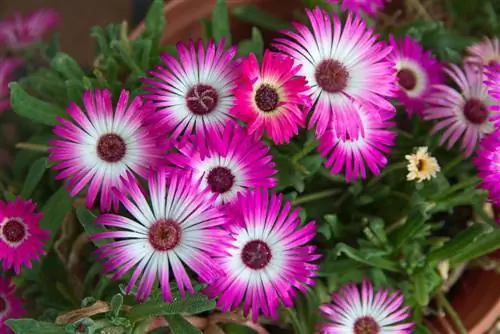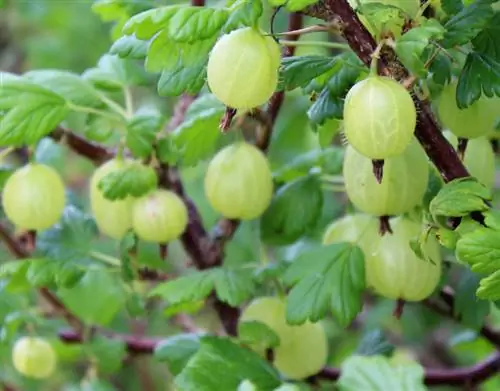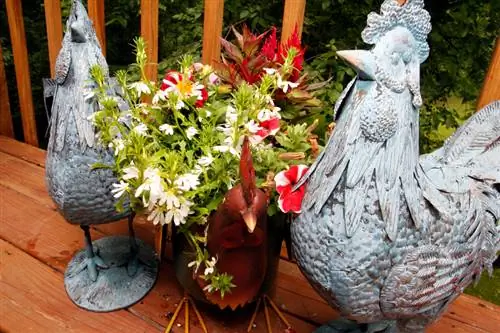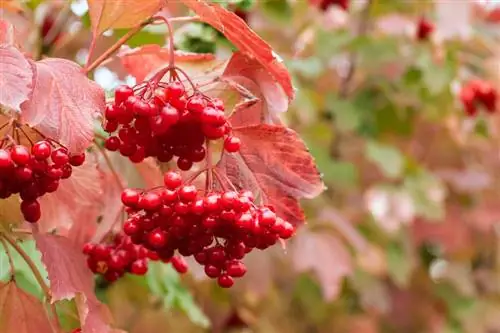- Author admin [email protected].
- Public 2023-12-16 16:46.
- Last modified 2025-01-23 11:19.
The jostaberry, also known as josta or yokeberry, is a relatively unknown new breed of blackcurrant and gooseberry. The shrub is significantly larger than its parent species and is also more productive. The jostaberry is relatively easy to care for and only requires regular pruning. The fruits ripen from July until autumn.
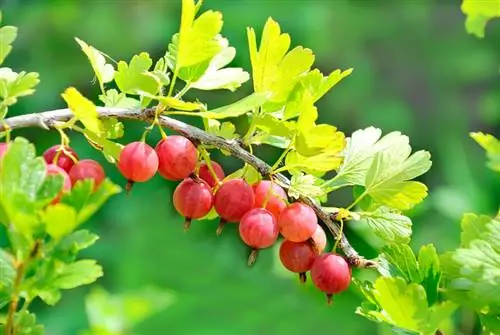
How do I properly care for a josta berry?
The care of the jostaberry includes thorough soil preparation, regular watering at the right level, fertilization in autumn and spring, annual thinning of the bushes and winter preparation by watering when necessary. The plant is robust and hardy.
How can I optimally prepare the soil before planting?
Before planting, the soil should be thoroughly dug up and enriched with plenty of manure or compost the previous year. It is also recommended to dig the planting hole twice as deep and then fill it halfway with a mixture of loose humus, coarse sand and small pebbles.
How often does the Jostaberry need to be watered?
In this regard, it is important to find the right balance. The yokeberry does not tolerate drought or waterlogging particularly well. At best, water with rainwater.
When and what should be fertilized?
Fertilization should be done twice a year. In the fall, spread rich compost or manure, and in the spring, fertilize the bushes with a special berry fertilizer (€10.00 on Amazon). More fertilization is usually not necessary.
When and how should the josta berries be cut?
Jostaberry bushes should be thinned out thoroughly once a year, with old branches and unnecessary shoots removed as close to the ground as possible. All shoots from the age of three must be pruned. Only between five and seven shoots should remain, and these should also be cut back by up to 2/3. Pruning is best done in October or November. Due to its very bushy growth, the Jostaberry is not suitable for grafting or as a standard tree.
Are josta berries affected by diseases or pests? What can I do about it?
The josta berry is extremely robust and is rarely affected by diseases or vermin. It is resistant to the powdery mildew typical of gooseberries and to leaf drop disease. The currant mites also avoid the jostaberry. However, if you notice yellowish discoloration on the tips of the leaves, this indicates over-fertilization. In this case, simply stop any unnecessary fertilization.
How can I get the josta berry over the winter without damage?
The josta berry is extremely hardy and can tolerate double-digit temperatures very well. Only in dry winters may it be necessary to water from time to time.
Tips & Tricks
The jostaberry is perfect for an opaque, extensive hedge. The shrub can grow up to one and a half meters high and just as wide. You can also plant different types of soft fruit in a hedge, then you can have a varied harvest in summer and autumn.


